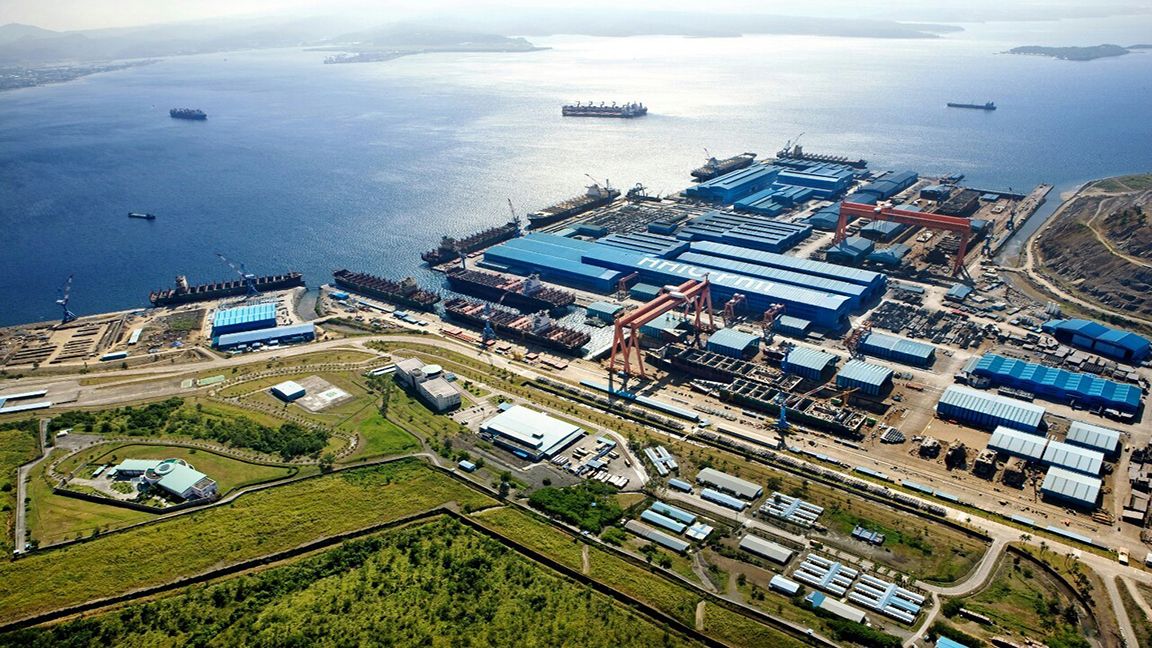THE Philippine Navy’s proposal to operate the shipyard—which it does not have the wherewithal to implement in terms of financials and operational skills—hinges on foreign investment that could easily come through Public Private Partnership deals.
As it is the Navy is struggling to raise interest from domestic investors, partly because of the huge cost and the preferential treatment given to foreign investors.
Companies from the US, Australia, Japan and South Korea have also expressed interest, said Defense Secretary Delfin Lorenzana, who suggested that Manila could also lease a majority stake to an external entity while keeping a minority share.
It’s not clear if President Rodrigo Duterte is comfortable with the idea of the Philippine Navy taking over operations of the shipyard. He’s been pushing for more Chinese investment in his country, wrote Nyshka Chandran of CNBC.
PN would operate within shipyard
A public–private partnership may be the way forward, since taking a direct hand in running an enterprise would contradict the government’s philosophy of privatization.
Moreover, the military establishment has neither the capability nor the desire to run a shipyard.
The navy assuming control over the shipyard is the lack of a well-protected, deep water harbor that can house a new inventory of larger vessels.
Current naval bases do not provide large enough or deep enough berthing areas.
Subic’s location in north-west Philippines would give the navy the added advantage of cutting response time in the event of security contingencies near Scarborough Shoal, the West Philippine Sea or even the north-eastern seaboard up to Benham Rise.
Navy Chief Vice Admiral Giovanni Carlo Bacordo said the Navy would occupy the northern part of the old Hanjin facility, which is close to 100 hectares for use by the Philippine Fleet, Naval Sea Systems Command, Naval Installations Command and Amphibious Assault Battalion.
Besides, Subic itself should be secured against control by potentially destabilizing forces. China’s de facto control of nearby Scarborough Shoal since 2012 — and its military presence on the Subic Fiery Cross and Mischief reefs since 2014 (all which are claimed by the Philippines) — have altered the balance of military forces in the South China Sea in China’s favor. This is cause for concern for the Philippines, other littoral states and maritime powers like the United States and Japan.
Speaking at the Macquarie Australian Conference, Austal chief executive Paddy Gregg said the COVID-19 pandemic had significantly delayed a very complicated transaction first flagged in 2019. He confirmed that Austal saw a big opportunity to win maintenance and support work for the US Navy on top of its shipbuilding, including at Subic Bay.
Almost done
Australian Ambassador Steven Robinson, signaled in May 2021 that the deal for Austal and Cerberus to buy the shipyards, which could act as a service facility for US Navy vessels and those of other western nations becoming more active in the region, was almost done.
Gregg’s comments came days after Austal confirmed it was selling out of a joint venture in China, which may have been the final hurdle to the acquisition given the growing tension between Manila and Beijing over the South China Sea.
“Subic Bay is very interesting to us because we think it gives an opportunity for a deepwater port in a pat of the world that these [navy] vessels are going to operate in more and more,” Gregg said.
